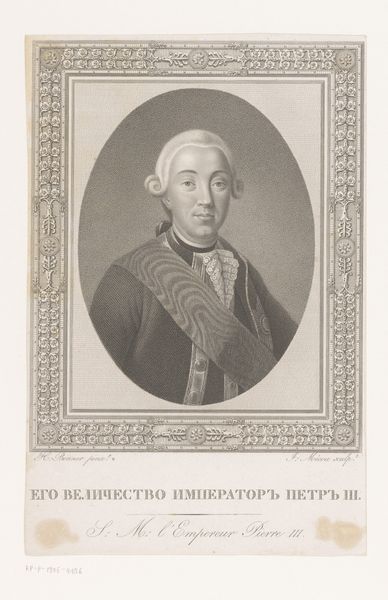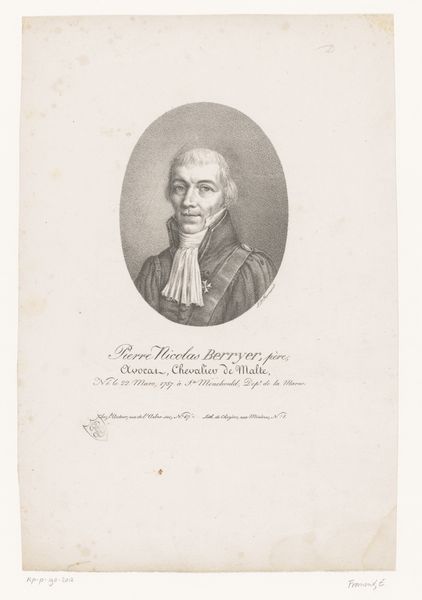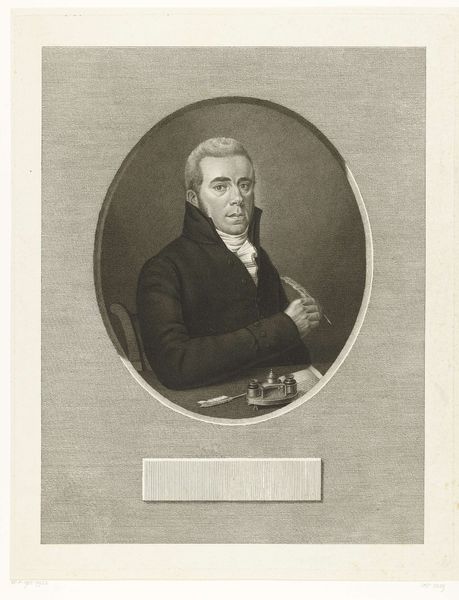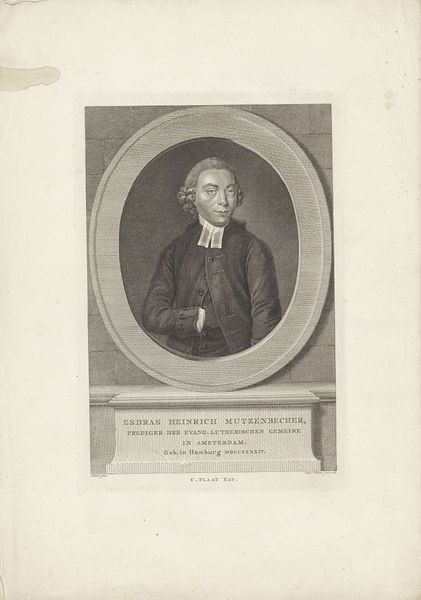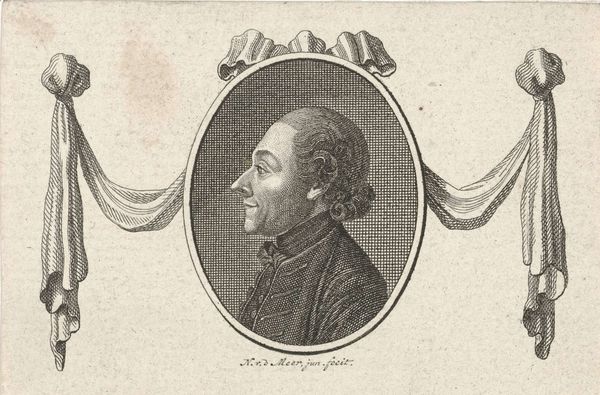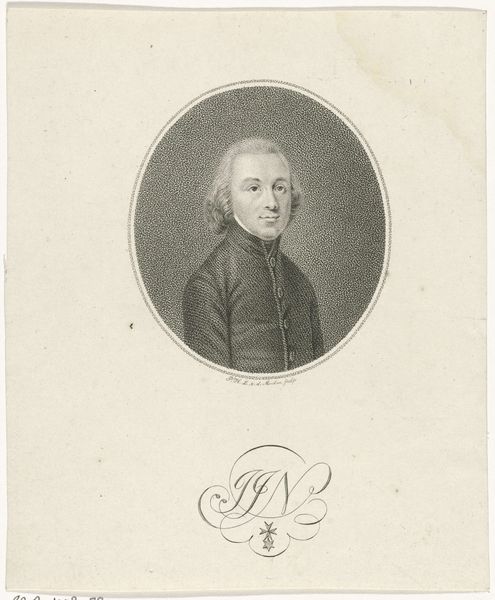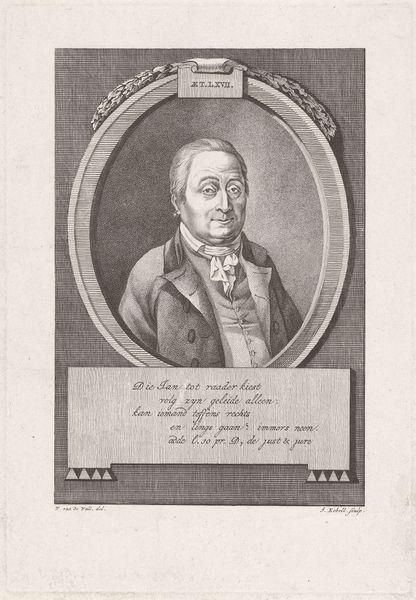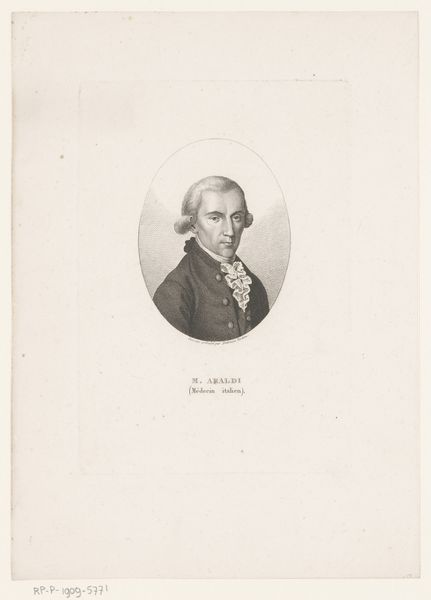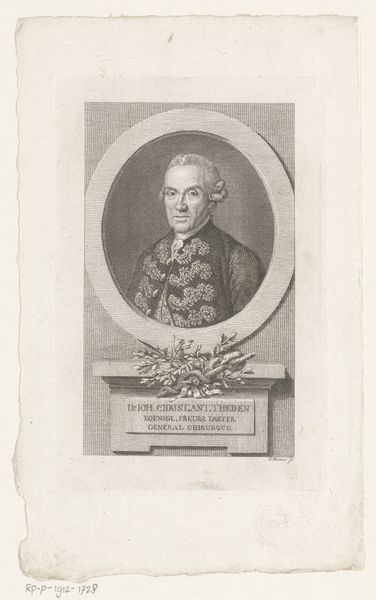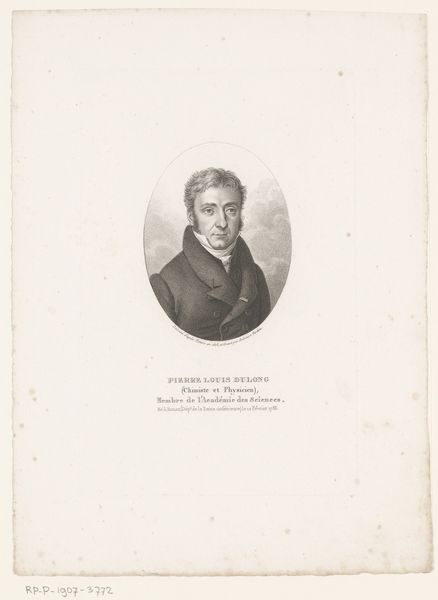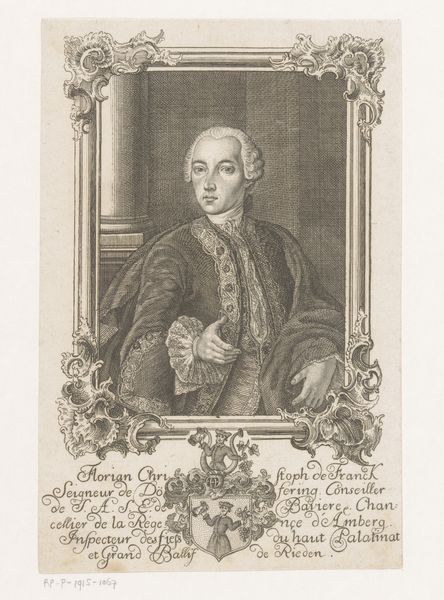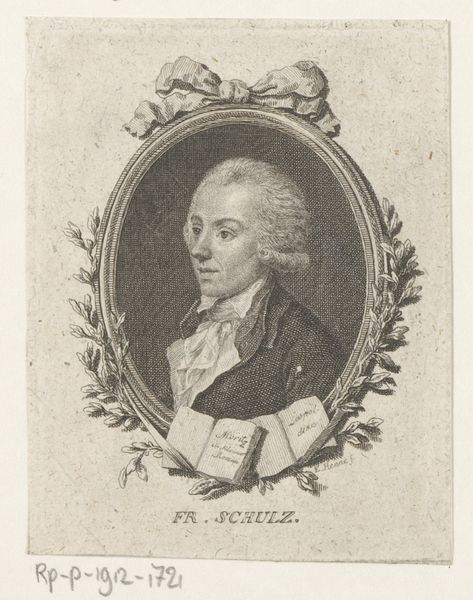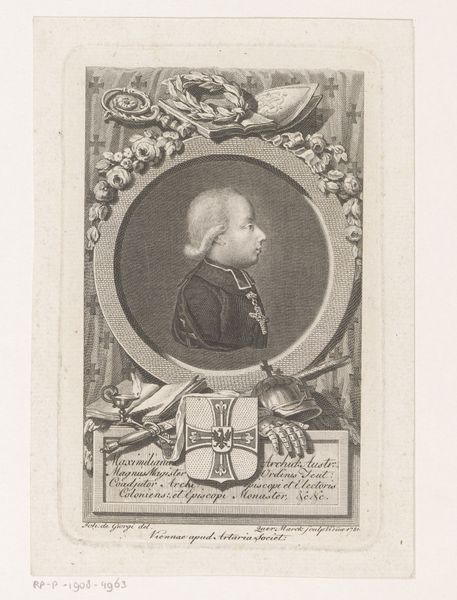
drawing, graphite
#
portrait
#
drawing
#
pencil drawing
#
graphite
#
history-painting
#
realism
Dimensions: height 235 mm, width 140 mm
Copyright: Rijks Museum: Open Domain
Curator: This intriguing drawing captures the likeness of Eise Eisinga. It's attributed to Hendrik Wilhelmus Last and was likely created sometime between 1842 and 1887. A graphite pencil on paper, housed right here at the Rijksmuseum. What strikes you first? Editor: That frame! It’s almost comically ornate, teeming with celestial whatnots – globes, instruments, swirling galaxies etched like afterthoughts. It gives the portrait this sort of whimsical, almost dreamlike aura, but I am not so sure it's not ironic too. The sitter seems... well, so serious! Curator: He was! Eisinga, you see, wasn’t just anyone. He built a planetarium in his own home, a working model of the solar system, driven by the pendulum of a clock. An incredible feat of engineering, born from a time when scientific wonder mixed freely with public spectacle. That's a statement by itself about Eisinga's confidence as well as societal support for a genius! Editor: The imagery woven into that frame screams symbolic order. Notice how neatly everything is arranged. But I can see it! That tiny planetarium at the bottom, under the bust... Almost lost within the frame's excess. A perfect encapsulation of a man and the immense weight of knowledge, condensed and contained. But I can feel its potential trying to push out the frame; it makes me anxious, almost. Curator: Last’s work reflects that tension you observe. It's technically very adept—a realistic rendering for sure—yet it clearly flirts with symbolism. He must have recognized in Eisinga a kind of Promethean spirit: this urge to understand the heavens and bring it back to us, here on Earth. I can only imagine, though: Why the frame had to be so ornamented? Editor: It speaks to a desire to contain, to categorize—even something as boundless as the cosmos! People, at least the folks depicted by Last in these kinds of works, feel the need to bring logic, to tame, you see. In the details, the artist makes use of visual mnemonics for science in the modern world... And the human as an "owner" of the discipline and not just part of it! Curator: True, it is difficult to approach Eisinga beyond the frame, that he has become the visual artifact for it; no escaping, it appears! Editor: Well, regardless, thank you for the insightful deep dive; food for thought!
Comments
No comments
Be the first to comment and join the conversation on the ultimate creative platform.
